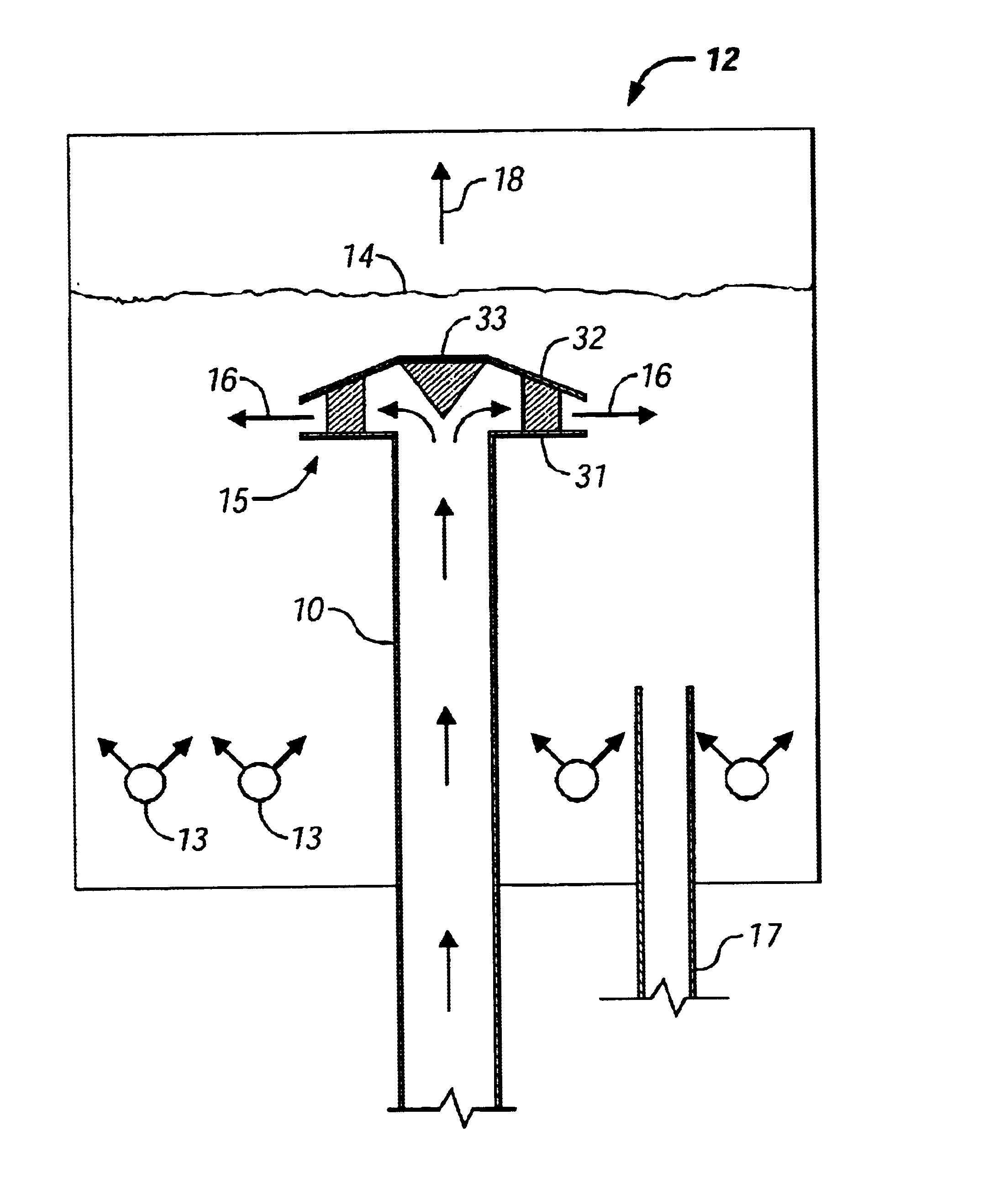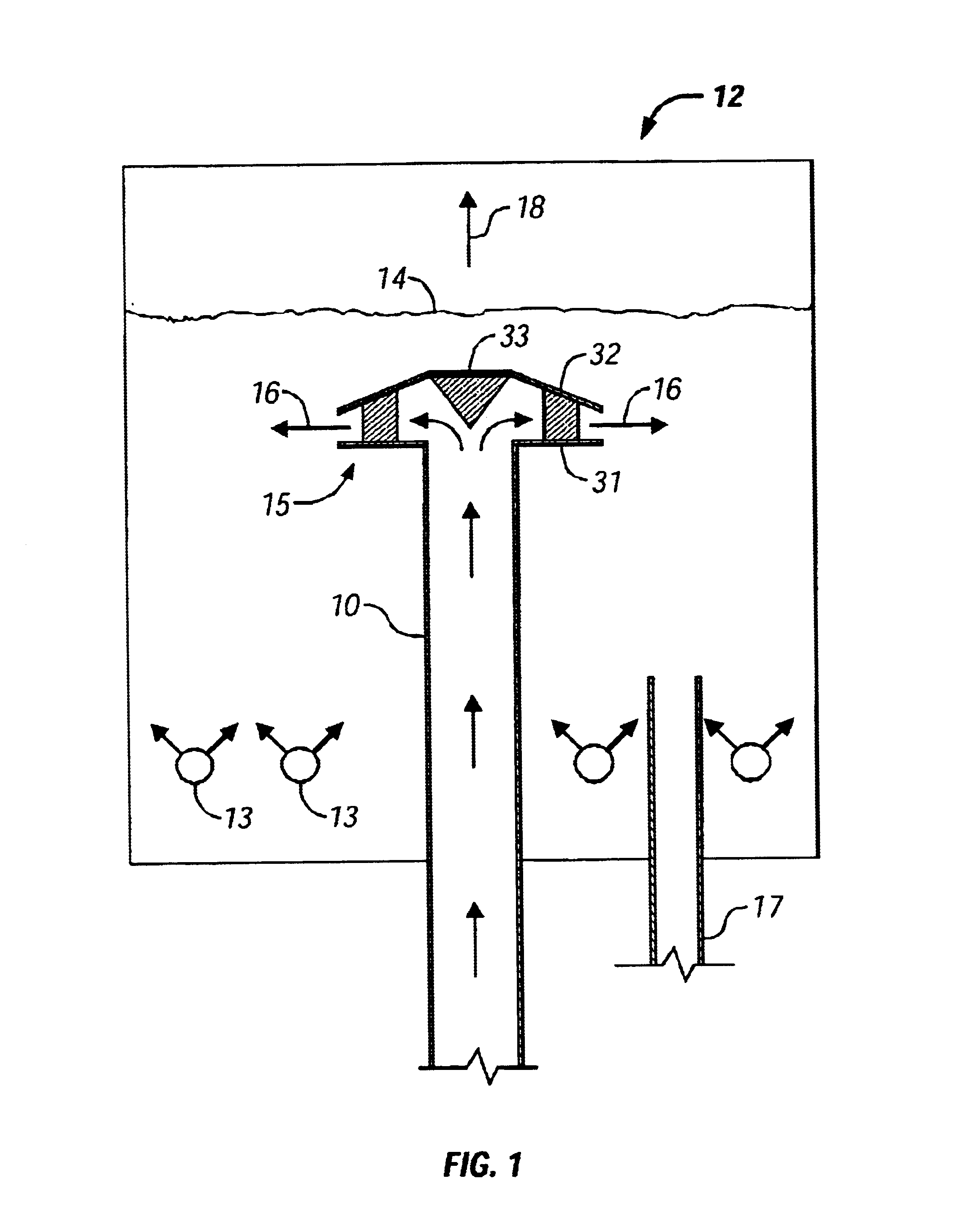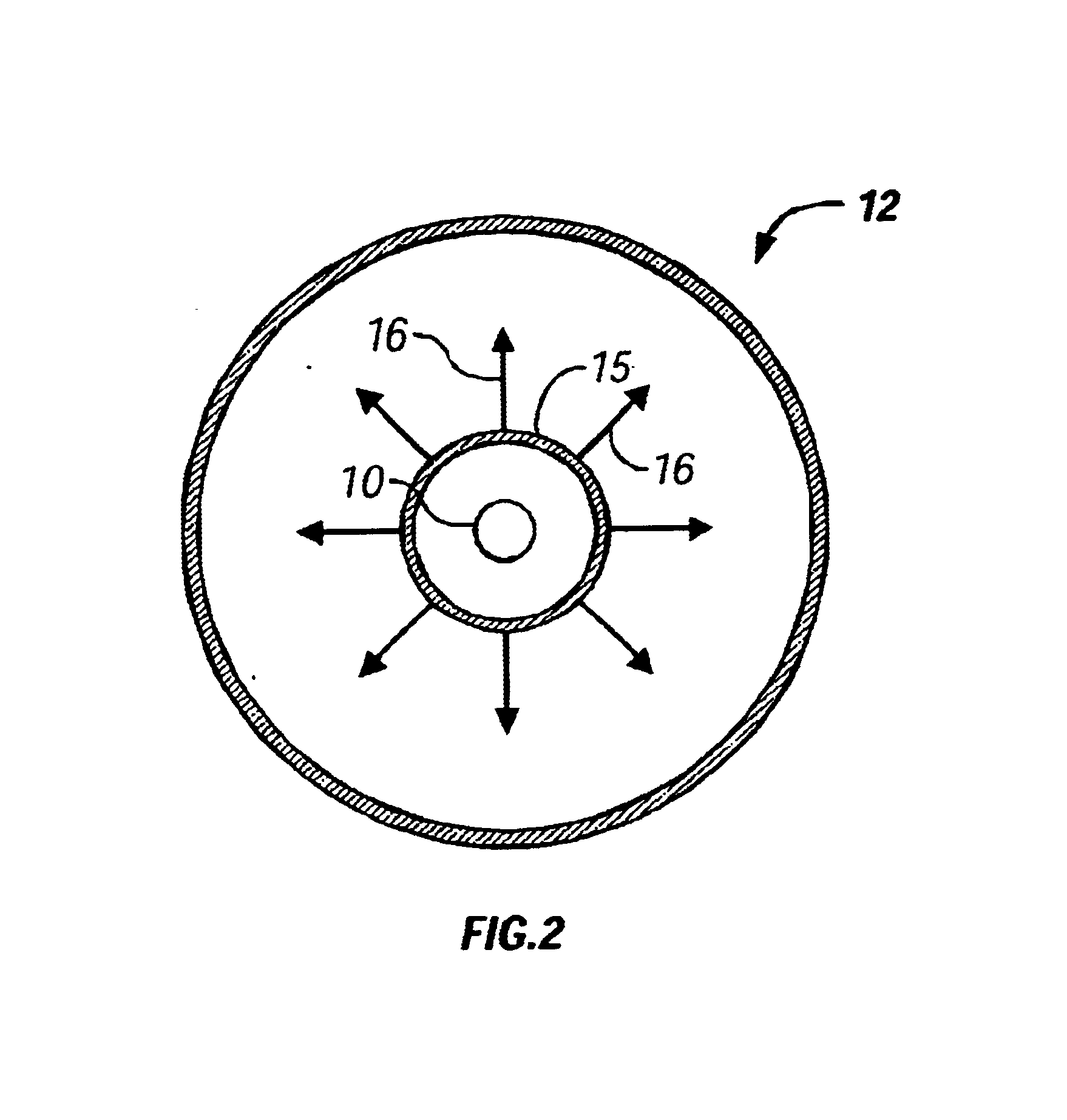Spent catalyst distributor
a technology of distributors and catalysts, applied in the direction of furnaces, separation processes, other chemical processes, etc., can solve the problems of poor combustion efficiency of transport gas, insufficient catalyst distribution in the regenerator, poor use of transport gas for regeneration and more afterburning
- Summary
- Abstract
- Description
- Claims
- Application Information
AI Technical Summary
Problems solved by technology
Method used
Image
Examples
Embodiment Construction
The following illustrative embodiment is for illustrative purposes only and is not intended to limit the scope of the invention in any way.
In the following illustrative embodiment, performance tests were conducted on a regenerator before and after the installation of one embodiment of the spent catalyst distributor of the present invention according to FIGS. 3A and 3B. FIG. 4 shows the prior art spent catalyst distributor that was replaced with an embodiment of the present invention. Table 1 below shows a comparison of some performance parameters before and after the installation.
Benefits of improved distribution of spent catalyst and transport gas in the regenerator can be utilized advantageously in numerous ways. In the above illustrative embodiment, the operator was able to run the regenerator with substantially less supplemental oxygen and reduce the carbon on the regenerated catalyst, while maintaining the required coke burning capacity. Both of these advantages bring substanti...
PUM
| Property | Measurement | Unit |
|---|---|---|
| Angle | aaaaa | aaaaa |
| Angle | aaaaa | aaaaa |
| Angle | aaaaa | aaaaa |
Abstract
Description
Claims
Application Information
 Login to View More
Login to View More - R&D
- Intellectual Property
- Life Sciences
- Materials
- Tech Scout
- Unparalleled Data Quality
- Higher Quality Content
- 60% Fewer Hallucinations
Browse by: Latest US Patents, China's latest patents, Technical Efficacy Thesaurus, Application Domain, Technology Topic, Popular Technical Reports.
© 2025 PatSnap. All rights reserved.Legal|Privacy policy|Modern Slavery Act Transparency Statement|Sitemap|About US| Contact US: help@patsnap.com



